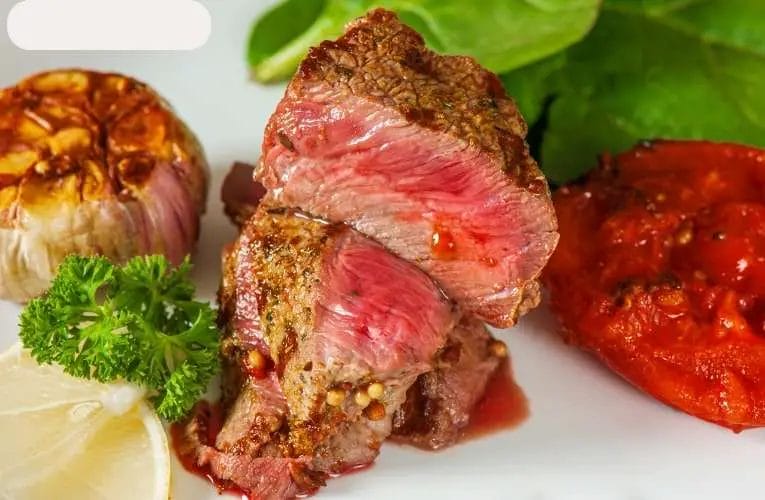If you’re wondering whether it’s safe to eat steak with blood, rest assured that it is. The red liquid present in a steak is not actually blood but rather a combination of water and a protein called myoglobin.
This protein gives the meat its red color and is perfectly safe to consume. However, it’s essential to ensure that the steak is cooked to the appropriate temperature to eliminate any potential health risks.
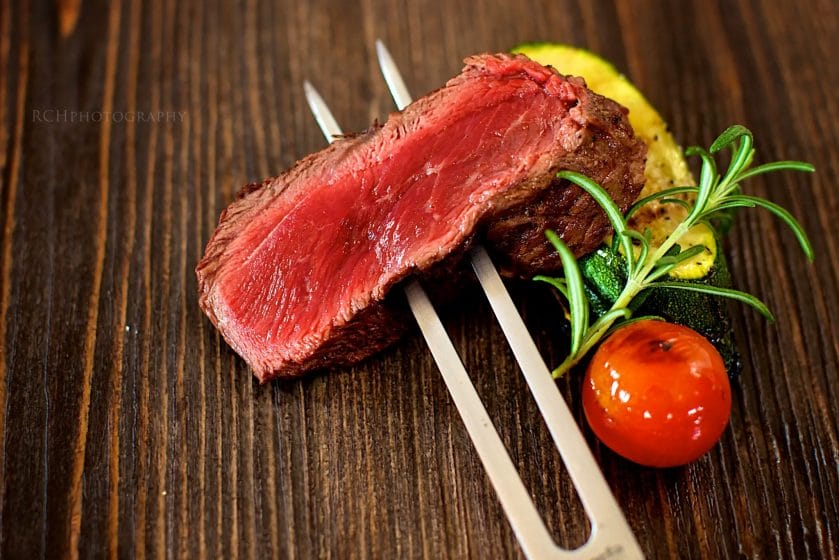
Cooking Methods for Safe Consumption of Steak
When it comes to cooking steak, it is important to ensure that it is cooked thoroughly to avoid any foodborne illnesses. In this section, we will explore different cooking methods that can guarantee the safe consumption of steak.
1. Grilling
Grilling is one of the most popular cooking methods for steak. It involves cooking the steak over direct heat, which helps to seal in the flavors and create a delicious charred crust. However, it is important to ensure that the steak is cooked to the recommended internal temperature.
For a medium-rare steak, which is the most common preference, the internal temperature should reach 145°F (63°C). Use a meat thermometer to accurately measure the temperature. Remember to let the steak rest for a few minutes before serving to allow the juices to redistribute.
2. Pan-searing
Pan-searing is another great option for cooking steak. This method involves searing the steak in a hot skillet with a small amount of oil. The high heat helps to develop a flavorful crust on the outside of the steak while keeping the inside juicy and tender.
To ensure that the steak is safe to consume, it is recommended to cook it to the minimum internal temperature of 145°F (63°C) for medium-rare. Flip the steak halfway through the cooking process to evenly heat both sides. Let the steak rest before slicing and serving.
3. Oven-roasting
Oven-roasting is a reliable method for cooking steak, especially for larger cuts or when cooking for a crowd. It involves placing the steak on a rack in a preheated oven and allowing it to cook slowly at a lower temperature. This method ensures even cooking and a juicy result.
For medium-rare steak, the internal temperature should reach 145°F (63°C). Use a meat thermometer to monitor the temperature throughout the cooking process. Let the steak rest before carving to retain its juices.
4. Sous Vide
Sous vide is a cooking technique that involves vacuum-sealing the steak and cooking it in a water bath at a precisely controlled temperature. This method ensures that the steak is evenly cooked to the desired doneness and retains its moisture.
For safe consumption, it is recommended to cook the steak to a minimum internal temperature of 145°F (63°C) for medium-rare. After cooking sous vide, sear the steak in a hot skillet or on a grill for a nice crust before serving.
5. Stewing or Braising
Stewing or braising is a method that involves slow-cooking the steak in a liquid, such as broth or wine, until it becomes tender and flavorful. This method is ideal for tougher cuts of steak that require longer cooking times.
Since stewing or braising involves cooking the steak for an extended period, it is important to ensure that the internal temperature reaches a safe level of at least 145°F (63°C) for medium-rare.
The longer cooking time also helps to break down the collagen in the meat, resulting in a tender and succulent steak.
Understanding the Importance of Proper Cooking Temperatures for Steak
When it comes to cooking steak, achieving the perfect doneness is crucial in order to bring out the best flavors and textures. One of the key factors in achieving that ideal doneness is understanding and maintaining the proper cooking temperatures.
In this section, we will delve into the importance of cooking temperatures and how they can affect the taste and quality of your steak.
1. Rare, Medium Rare, Medium, and Well-Done: What Do They Mean?
Before we dive into the specifics of cooking temperatures, it’s important to understand the different levels of doneness that are commonly associated with steak. Here are the four main categories:
- Rare: The steak is cooked for a short amount of time, resulting in a warm red center.
- Medium Rare: The steak is cooked slightly longer, with a warm pink center.
- Medium: The steak is cooked for a moderate amount of time, resulting in a pink center.
- Well-Done: The steak is cooked for a longer period, resulting in little to no pinkness.
Now, let’s explore why cooking temperatures are so important in achieving these desired levels of doneness.
2. The Importance of Cooking Temperatures
Cooking temperatures play a vital role in determining the doneness of your steak. Here’s why:
- Taste and Texture: Different degrees of doneness result in different textures and flavors in the meat. For example, a rare steak will be more tender and juicy, while a well-done steak will be firmer and drier. By knowing the appropriate cooking temperatures, you can ensure that your steak is cooked to your desired taste and texture.
- Food Safety: Proper cooking temperatures are also essential from a food safety standpoint. Cooking steak to the right internal temperature helps kill harmful bacteria, such as E. coli and Salmonella, that may be present in the meat. This helps reduce the risk of foodborne illnesses.
3. Recommended Cooking Temperatures
Now that we understand the importance of cooking temperatures, let’s take a look at the recommended internal temperatures for steak:
| Doneness | Internal Temperature |
|---|---|
| Rare | 125°F (52°C) |
| Medium Rare | 135°F (57°C) |
| Medium | 145°F (63°C) |
| Medium Well | 150°F (66°C) |
| Well-Done | 160°F (71°C) |
These temperatures are measured using a meat thermometer and refer to the internal temperature of the steak. It’s essential to insert the thermometer into the thickest part of the meat for accurate readings.
4. Achieving the Perfect Steak
Now that we know the recommended cooking temperatures, here are some tips to help you achieve the perfect steak:
- Preheat your grill or pan to the desired temperature before cooking the steak.
- Season the steak with salt and pepper or your preferred seasoning.
- Cook the steak to the recommended internal temperature, using a meat thermometer to ensure accuracy.
- Allow the steak to rest for a few minutes after cooking to allow the juices to redistribute.
- Serve and enjoy your perfectly cooked steak!
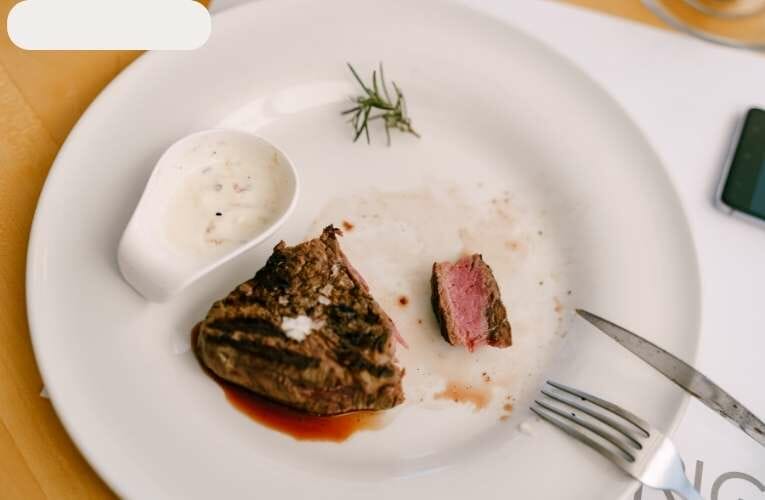
Exploring the Myth: Is Blood in Steak Safe to Eat?
When it comes to enjoying a delicious steak, one of the most debated topics is the presence of “blood” in the meat. Many people believe that red liquid oozing out of a juicy steak is blood, but the truth is, it’s not actually blood.
In this section, we will delve into this popular myth and uncover the reality behind the “blood” in steak.
1. The Misconception of Blood
Contrary to popular belief, the red liquid in a steak is not blood. The process of slaughtering animals involves draining the blood from the carcass.
Therefore, what you see in your steak is a mixture of water and a protein called myoglobin. Myoglobin is responsible for the red color of meat and is found in the muscle tissue of animals.
The presence of myoglobin in steak is essential as it plays a crucial role in delivering oxygen to the muscle cells. This protein gives the meat its red or pink hue, which can vary depending on factors such as the animal’s age, diet, and cooking method.
2. The Importance of Proper Cooking
While the “blood” in steak is not blood at all, it is still vital to ensure that your steak is cooked properly to eliminate any potential pathogens or bacteria that may be present. Cooking steak to a safe internal temperature is crucial to prevent foodborne illnesses.
The recommended internal temperature for cooking steak varies depending on the desired level of doneness. For rare steak, an internal temperature of 130°F (54°C) is recommended, while medium-rare steak should reach 135°F (57°C).
It is important to note that these temperatures are for steak cuts only and may differ for other types of meat.
3. Health Risks and Safety Measures
Consuming undercooked or raw meat can pose certain health risks. The main concern is the potential presence of harmful bacteria such as Salmonella, E. coli, or Campylobacter.
These bacteria can cause food poisoning and lead to symptoms like nausea, vomiting, diarrhea, and in severe cases, even hospitalization.
To ensure the safety of your steak consumption, it is crucial to follow proper food handling and cooking practices. Here are some essential safety measures to consider:
- Always purchase meat from a reputable source.
- Store raw meat properly in the refrigerator to prevent bacterial growth.
- Thaw frozen steak in the refrigerator rather than at room temperature.
- Use separate cutting boards and utensils for raw and cooked meat.
- Wash hands thoroughly before and after handling raw meat.
- Cook steak to the recommended internal temperature.
4. Flavor and Juiciness
Now that we’ve debunked the myth of “blood” in steak and established the importance of proper cooking, it’s worth mentioning the role of the red liquid in the overall flavor and juiciness of the meat.
The myoglobin in steak not only contributes to the color but also enhances the flavor and juiciness. As you cook the steak, the myoglobin undergoes chemical changes, resulting in the development of rich flavors and a desirable texture.
The red liquid, often referred to as “juices,” adds to the overall sensory experience of savoring a perfectly cooked steak.
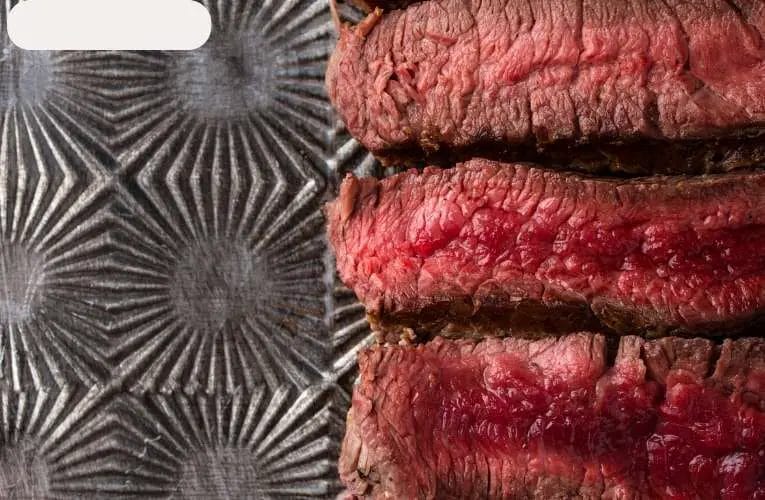
Tips for Ordering Steak with Desired Doneness while Ensuring Safety
Ordering a steak can be a delightful experience, especially when you get it cooked to your desired level of doneness. However, it’s crucial to prioritize safety while indulging in this culinary pleasure. To help you navigate the steak ordering process, here are some essential tips to keep in mind:
1. Understand the Different Levels of Doneness
Before placing your order, it’s essential to familiarize yourself with the various levels of doneness to ensure you get your steak cooked exactly to your liking:
- Rare: The center of the steak will be very red, with a cool, red exterior.
- Medium Rare: The center will be pink with a warm, red exterior. This is a popular choice for steak enthusiasts.
- Medium: The center will be pink and the exterior will have a slight browning.
- Medium Well: The center will be slightly pink, with a mostly brown exterior.
- Well Done: The steak will be entirely brown and cooked thoroughly.
2. Communicate Clearly with Your Server
When ordering your steak, don’t hesitate to communicate your desired level of doneness clearly to your server. Use the terms mentioned above to ensure there is no confusion. If you have specific preferences, such as a steak cooked closer to medium than medium rare, don’t hesitate to mention it.
3. Consider the Thickness of the Steak
The thickness of the steak can affect the cooking time and the doneness achieved. Thicker steaks may require more cooking time to reach the desired level of doneness.
If you prefer a rare or medium-rare steak, it’s best to opt for a thinner cut. Thicker cuts are better suited for those who prefer medium or well-done steaks.
4. Request a Resting Period
After your steak is cooked, it’s important to allow it to rest before cutting into it. Request a resting period of a few minutes to allow the juices to redistribute within the meat. This will result in a juicier and more flavorful steak.
5. Ensure Proper Food Safety Practices
While enjoying a delicious steak, it’s crucial to prioritize food safety. Here are some key practices to follow:
- Choose a reputable restaurant known for its high standards of hygiene and food safety.
- Check for proper storage and handling of raw meat to prevent cross-contamination.
- Verify that the steak is cooked to the recommended internal temperature to kill any harmful bacteria. For example, the USDA recommends cooking steaks to a minimum internal temperature of 145°F (63°C) for medium-rare.
- Use separate utensils and cutting boards for raw and cooked meat to prevent cross-contamination.
- When in doubt, don’t hesitate to ask your server about the restaurant’s food safety practices.
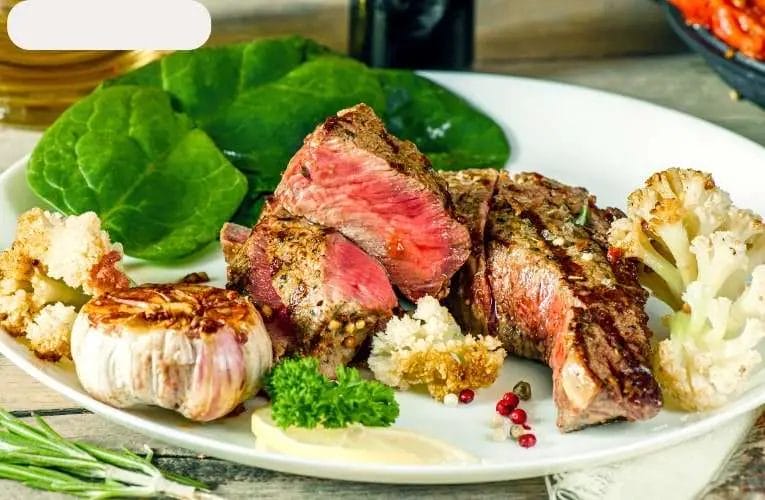
Ensuring Food Safety: Handling and Storage Guidelines for Steak
In this section, we will discuss the important guidelines for handling and storing steak to ensure food safety. Proper handling and storage practices are crucial to prevent contamination and the growth of harmful bacteria that can cause foodborne illnesses.
By following these guidelines, you can enjoy a delicious and safe steak dinner.
1. Purchasing Fresh and Quality Steak
The first step in ensuring food safety is to purchase fresh and high-quality steak. When buying steak, consider the following:
- Choose steak that is bright red in color with minimal discoloration.
- Ensure that the meat is firm to the touch and not mushy.
- Check for any foul odors or signs of spoilage.
- Buy steak from reputable and trusted sources.
2. Safe Storage Temperatures
Proper storage temperatures are essential to prevent bacterial growth that can lead to foodborne illnesses. Follow these guidelines:
- Refrigerate steak as soon as possible after purchasing or receiving it.
- Keep the refrigerator temperature at or below 40°F (4°C).
- Store steak in the coldest part of the refrigerator, usually the bottom shelf.
- Keep raw steak separate from other foods to avoid cross-contamination.
- Use or freeze steak within 3 to 5 days of purchase.
3. Proper Handling and Thawing
When handling steak, it is important to follow proper hygiene practices to prevent the spread of bacteria:
- Wash your hands thoroughly with soap and warm water before and after handling raw steak.
- Use separate cutting boards and utensils for raw and cooked foods to avoid cross-contamination.
- Thaw frozen steak in the refrigerator or by using the defrost setting on your microwave.
- Do not thaw steak at room temperature, as this increases the risk of bacterial growth.
4. Cooking Steak to Safe Temperatures
Proper cooking temperatures are crucial to kill any bacteria present in the steak. Follow these guidelines:
- Cook steak to a minimum internal temperature of 145°F (63°C) for medium-rare, 160°F (71°C) for medium, or 165°F (74°C) for well-done.
- Use a food thermometer to ensure accurate measurement.
- Avoid consuming rare or undercooked steak, especially if you have a weakened immune system.
5. Leftover Steak
When dealing with leftover steak, take the following precautions:
- Refrigerate leftover steak within 2 hours of cooking.
- Store leftovers in shallow, airtight containers.
- Consume leftover steak within 3 to 4 days.
- Reheat leftover steak to an internal temperature of 165°F (74°C) before consuming.
By following these handling and storage guidelines, you can ensure the safety of your steak and enjoy a delicious meal without any worries of foodborne illnesses. Remember to prioritize food safety and take necessary precautions at every step of the process.

FAQs
Is it safe to eat steak with blood?
Yes, it is safe to eat steak with a reddish or pink center. The red liquid you see is not blood, but a mixture of water and a protein called myoglobin. However, it is important to ensure that the steak is properly cooked on the outside to kill any potential bacteria.
Conclusion
In conclusion, the perception of “bloody” steak can be misleading. While it is safe to eat a steak that is cooked to the desired level of doneness, the term “blood” refers to the reddish liquid that is released during cooking, which is actually a protein called myoglobin.
This misconception often leads to debates about the safety of eating rare or medium-rare steak. However, it is important to note that properly cooked steak, regardless of its level of doneness, poses no health risks.
Ultimately, the decision on how to enjoy your steak should be based on personal preference and taste.
When it comes to enjoying a perfectly cooked steak, it is essential to follow proper cooking techniques and guidelines to ensure food safety.
This includes using a food thermometer to check the internal temperature, which guarantees that the steak has reached the necessary level of doneness to eliminate any harmful bacteria.
By understanding the science behind the “bloody” appearance and practicing safe cooking practices, you can confidently indulge in a delicious steak without any concerns about its safety.

